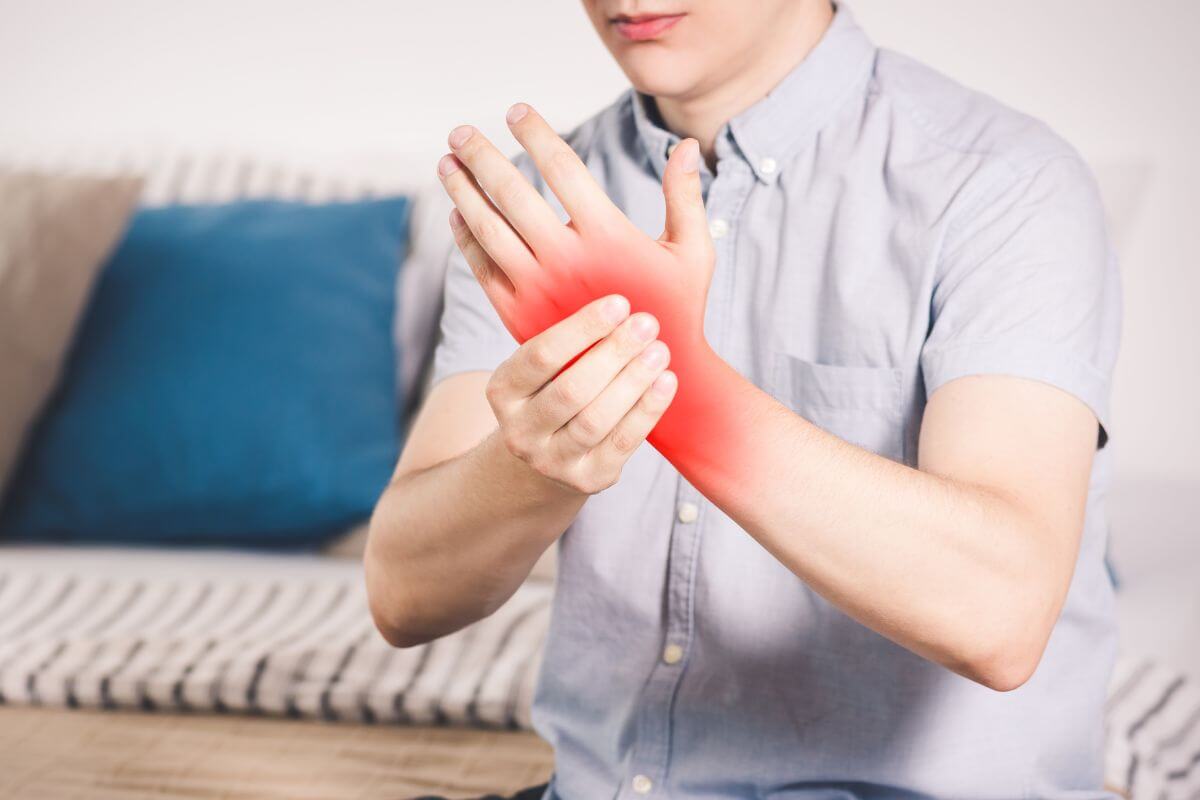
How to Prevent Hand Cramps
|
|
Time to read 3 min
|
|
Time to read 3 min
Hand cramps can occur at the worst moments. You could be typing, minding your own business, and suddenly find you can no longer move your fingers. What's more, you're left in a state of utter discomfort. Rest assured, you're not the only one this happens to.
In this guide, we'll explore ways to prevent hand cramps, also known as Focal Dystonia, to save yourself from these unexpected interruptions and keep your hands healthy.
From drinking enough water to making sure you have an ergonomic workspace, there are simple prevention strategies you can adopt. Plus, you'll learn what specific activities require unique approaches. Among these include sports and typing.
Your hands need tender love and care, and this guide will help make sure of that. Learn practical tips to maintain muscle function in your fingers. Let's dive into hand health and unlock the secrets to preventing those pesky cramps.
Are your hands cramping? What could be behind it? Here are some of the usual culprits behind your hand cramps:
Electrolyte Imbalances
Carpal Tunnel Syndrome
Poor Circulation
Stiff Hand Syndrome
Low Magnesium Levels
Kidney Disease
Repetitive Activities
Many of these conditions result in nerve compression, which can lead to muscle weakness and cramping. While other remedies may help, the best course of action is to see your health care provider. Medical care is essential for identifying the underlying cause of those involuntary contractions.
For a deeper insight into what could be causing your hand cramps, check out our article on What Causes Hand Cramps (link here).
Let's discuss some key preventative steps to reduce hand muscle cramping. If you have an existing health issue, talk with your doctor to see if that could be causing the symptoms.
Some general health tips to avoid developing hand cramps include:
Stay Hydrated - Drink plenty of water. Eight glasses throughout the day should be your goal. Hand cramps are more likely to strike when you're dehydrated. You'll know when you've hydrated enough when your urine color is clear or pale yellow.
Avoid Prolonged, Repetitive Actions - Tasks that involve repetitive hand motions for long periods should be minimized.
Avoid High Amounts of Alcohol - Alcohol can dehydrate you, increasing the likelihood of cramps.
Maintain Electrolyte Balance - Foods that are rich in electrolytes are your best friend. Some of the best ones include bananas for potassium, sports drinks, and dairy for calcium.
Stretch Regularly - Stretching your hands and fingers regularly can work wonders. Make it a habit to do this before engaging in activities that involve repetitive use of these muscles.
Do Strength Building Exercises - Exercise your hand and forearm muscles. Building hand strength and endurance reduces the risk of cramps during repetitive tasks.
Vitamin D supplements are known to help relieve hand cramps, by boosting calcium absorption and muscle function, but they won't stop your cramps.
Read our article on How to Get Rid of Hand Cramps (link here) for effective ways to relieve muscle spasms in your hands.
Avoiding hand cramps can be simple if you follow these tips for different activities.
When typing or writing, it's important to:
Take Breaks - Use the 20-20-20 rule. Every 20 minutes, take a 20-second break to look at something 20 feet away. Take this time to do some hand and finger stretches.
Adjust Ergonomics - Use ergonomic keyboards and writing tools. Set up your workspace to support good posture.
For playing instruments, you should:
Limit Practice Sessions - Break your practice into shorter sessions with rest periods. This helps avoid overuse. Increase practice time slowly to build endurance.
Change Hand Positions - Try different hand positions and techniques. This can help reduce strain on specific muscles.
In sports and physical activities, remember to:
Warm-Up and Cool Down - Always warm up before sports and cool down afterward. Stretching helps prevent cramps during physical exertion.
Exercise in Cooler Conditions - If you're outdoors, try to exercise in cooler temperatures. This reduces the risk of dehydration and overheating, which can lead to cramps.
By following these steps, you can keep your hands happy and cramp-free.
There are a few important steps you can take to stop your hand from cramping:
Taking breaks when performing repetitive tasks
Stretching your hands, fingers, and forearms to improve flexibility
Ensuring adequate intake of electrolytes, such as potassium, magnesium, and calcium
To help stop hand cramps, drink fluids rich in electrolytes like potassium, magnesium, and calcium, such as:
Coconut water
Orange juice
Milk
Smoothies with bananas and leafy greens
Yes, salt can help alleviate hand cramps, particularly when they are related to electrolyte imbalances or dehydration.
Sources:


